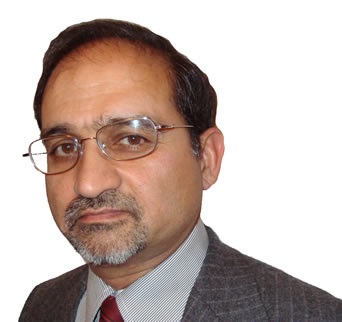Please can you outline the main findings of the World Health Organization’s (WHO) first global report on suicide prevention?
Suicide is a serious public health problem. More than 800,000 people die from suicide every year – that’s one person every 40 seconds.
Suicide occurs all over the world, making it a global problem. 75% of suicides occur in low and middle-income countries and suicide is the second leading cause of death among 15-29 year-olds globally.
Globally, suicide rates are highest in people aged 70 and over. Pesticide poisoning, hanging and firearms are among the most common methods of suicide globally.
Suicides are preventable and countries should strive for a national strategy for suicide prevention, which includes action by both health and social sectors, from government to community level.
Some of the most effective actions to prevent suicide include reducing access to means of suicide, responsible reporting of suicides by the media, alcohol policies, and early identification and treatment of mental and substance use disorders.
WHO: Preventing suicide: a global imperative
What are the most important risk factors for suicide?
The most important risk factors for suicide include:
- previous suicide attempts and family history of suicide
- harmful use of alcohol
- mental disorders
- financial loss
- chronic pain
- discrimination
- sense of isolation
- abuse, violence, conflictual relationships
- stress related to moving to live in a different culture (e.g. indigenous peoples or displaced persons)
Who is most at risk of suicide and how does this vary by country?
Globally, suicide rates are highest in people aged 70 years and over. In some countries, however, the highest rates are found among the young. Notably, suicide is the second leading cause of death in 15-29 year-olds globally. Generally, more men die of suicide than women, particularly in richer countries.
More information on the trends by age, sex and regions of the world is contained in the WHO report.
How can we help prevent people dying by suicide?
Governments, through their health, social and other relevant sectors, should make suicide prevention integral to mental health plans, investing human and financial resources in areas expected to have the greatest impact.
Ultimately, a national strategy, with commitment to and resources for implementation, is the goal, but efforts can also begin on a smaller-scale.
Communities are encouraged to provide social support to vulnerable individuals on an ongoing basis.
Societies are encouraged to talk openly about mental health – to help break down the stigma associated with seeking help.
Which countries currently have national suicide prevention strategies and how effective are these?
Only 28 countries are known to have national suicide prevention strategies. Developing multisectoral suicide prevention strategies and implementing them systematically is very effective in preventing suicides.
Globally, why is the quality of data on suicide poor and what needs to be done to improve surveillance and monitoring of suicide attempts?
In many cases, data from countries on their suicide numbers and rates is incomplete, inaccurate and delayed-The Report recommends that countries enhance their capacity to generate more reliable data by strengthening their reporting systems.
Countries where attempted suicide is a criminal offense are encouraged to review their legal provisions in relation to suicide to ensure they do not deter people from seeking help. Decriminalisation of suicide can also support more accurate reporting of suicide and suicide attempts.
What are WHO’s plans for the future with regards to suicide prevention?
WHO will continue to assist countries to strengthen their suicide prevention efforts and will provide updates on the global situation to monitor this public health priority over time.
What are the main challenges that will need to be overcome?
Removing stigma around suicide is a significant challenge. Involving a number of sectors (such as education, employment, social welfare and judicial departments, as well as health) in suicide prevention efforts can also be a challenge
Where can readers find more information?
The report can be downloaded from WHO’s website:
WHO video on suicide prevention https://www.youtube.com/watch?v=8NVBMfdP1Ww&list=UU07-dOwgza1IguKA86jqxNA
About Dr Shekhar Saxena
 Director
Director
Department of Mental Health and Substance Abuse
World Health Organization
Geneva, Switzerland
Dr Saxena is a psychiatrist by training, working at the World Health Organization since 1998. His responsibilities include evaluating evidence on effective public health measures and providing advice and technical assistance to ministries of health on the prevention and management of mental, developmental, neurological and substance use disorders and suicide prevention.
His work also involves establishing partnerships with academic centres and civil society organizations and global advocacy for mental health.
Dr Saxena is leading WHO’s work to implement the Comprehensive Mental Health Action Plan adopted by the World Health Assembly in May 2013 and work related to public health action related to dementia.